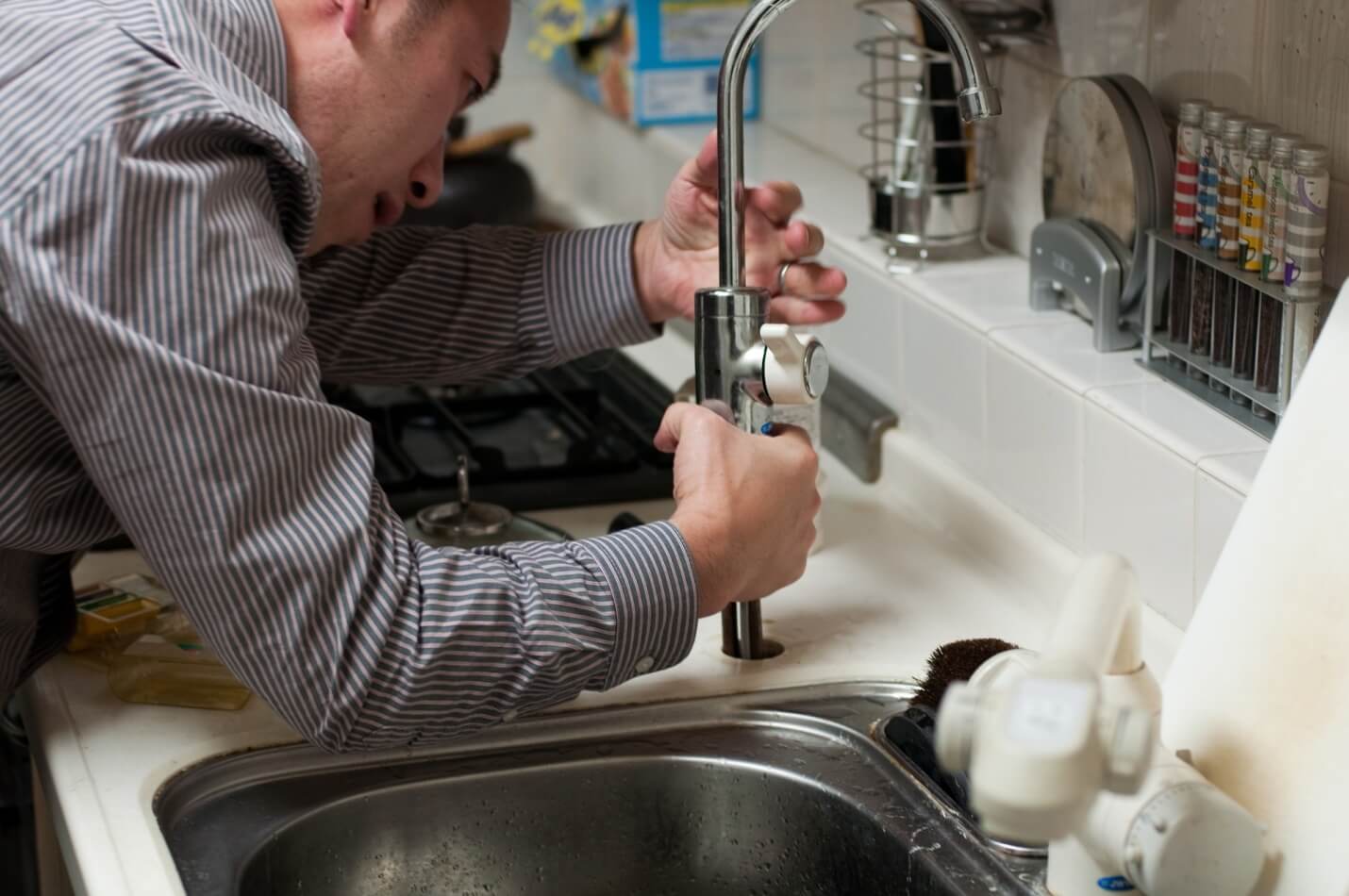A leaky faucet can waste up to 20 gallons of water in just one day.
If you have a leaky faucet in your home right now in your kitchen or bathroom, you may think it’s just a small issue that can wait, but you’re wrong. Even though a leaky faucet is a common plumbing problem and is more than just an annoying dripping sound, it can actually cause harm to your caulk and grout, as well as lead to expensive water bills.
So you know you have a leaky faucet, but you don’t know why. Let’s get to the bottom of it so you can stop that dripping faucet, save your plumbing, and keep those energy bills down.
Why Is My Faucet Leaking?
Have a leaky faucet? First, take a look at your sink. Just a general once-over can help you get to the bottom of your issue. For instance, if you see water pooling around the faucet’s stem, you may need to replace the faucet’s o-ring or have a loose packing nut.
If you see a leak coming from the spout, your faucet handle is most likely the culprit. If you don’t know what kind of faucets you have in your home, now is the perfect time to learn because it does matter when it comes to finding the solution to your leaky faucet.
Types of Faucets
The method you’ll use to fix your leaky faucet depends on the type of faucet you own, so let’s take a look at the different types.
Cartridge
This type is most commonly found in bathrooms. They have two handles on either side of the spout that move up and down. This up and down motion is what controls the water flow. When you notice a leak in this type of faucet, it’s most likely due to the cartridge, and you’ll have to replace it.
Disc
Disc type faucets are a relatively new type of faucet, and they tend to be more on the pricier side because they’re more durable and reliable than typical faucets. They have only one layer to operate them, and the lever sits on top of a cylindrical body.
Ball
The ball joint in this faucet controls the hot and cold water lines and is most commonly found in kitchens and other high-use areas. It has a single handle with a round cap on top of the spout. You push up on the handles to adjust the pressure and turn it left and right to adjust the temperatures.
Compression
The compression faucet is often found in older homes, as this type of faucet is the oldest type of the four, but it is still very commonly used. This faucet has two handles, one on each side of the spout. The most apparent trait that makes these stand out against the others is that you can feel it tighten when you shut off the water using the handle.
Compression faucets use rubber washers to help seal against water flow. These rubber washers are often the culprit of why this type of faucet leaks, meaning when they wear out; you’ll need to replace them.
So What’s Causing the Leak?
As said before, the root cause of your leaky faucet often depends on the type of sink you have. Now that we’ve covered the different types, let’s dive into what may be the cause and ways you can possibly repair your leaky faucet yourself.
You have a worn-out or damaged cartridge
If you have a cartridge faucet, the cartridge valve that controls the water flow may need replacement. If you see that your faucet is dripping water, this is usually a good indicator that this is the root of your issue.
Your washers are worn out
One of the most common causes of a leaky faucet is contributed to a worn-out washer. Washers help seal against the water and rest against the valve seat. Over time, friction causes the washers to get worn down. Additionally, it’s possible that whenever the faucet was installed, the person installing it used the wrong size washer, causing the leaks.
Check your water pressure
Does your sink only drip or leak during a particular time of day? If so, it could be a water pressure problem. Check-in with your home’s water pressure to see if there are any issues and if there are, address them to see if that fixes your faucet leaking problem.
Your o-ring needs replacement
If you have a faucet that has an o-ring, these often, much like washers, get worn down over time and need replacing. An o-ring is found inside the faucet and is a small disc attached to the stem screw that holds the handle in place.
Your valve seat needs repair
The valve seat that is connected to your faucet spout can sometimes collect buildup. This can cause your faucet to leak because that buildup corrodes the seat over time.

How Can I Fix My Leaky Faucet Myself?
If you aren’t familiar with faucets, you can always call a professional to diagnose and fix your leaky faucet. However, if you have some knowledge and feel up to the task, you might be able to make some minor repairs with basic tools.
- Turn off the water, either under the sink or to the whole house
- Close your drain so parts don’t fall down your pipes
- Disassemble your faucet
- Inspect your faucet parts
- Replace whatever part is needed and clean the parts as you go
- Put the faucet back together
- Test your water flow to see if the leak has stopped
Again, if you don’t have the knowledge, don’t try to fix your own leaky faucet. Call a professional!
What Will Happen If I Don’t Repair My Leaky Faucet?
A leaky faucet is a very common issue, and because it’s not immediately impacting anything in your home, it’s also one of the most overlooked issues in a home. Most people tend to ignore or put off fixing a dripping or leaky faucet because it doesn’t seem like a big deal, but it can be.
If you procrastinate, you could be turning a minor, inexpensive problem into a significant issue that will cost a lot to fix because it could lead to extensive damage. Fix your leaky faucet now. Remember, every drop of water may not seem like a big deal, but they add up over time. This leads to extremely high water bills. Just fixing one leaky faucet can save you 10% of your annual water bill!
Having your faucet constantly dripping is also terrible for the environment. The average household already wastes a ton of water every year, and a leak can contribute almost 100,000 more gallons on top of that!
A leaky faucet can also deteriorate grout and caulk, which can make the leak worse. A worsening leak means possible drain clogs, overflows, or water leaking into the floorboards and ceilings that will cost thousands of dollars to replace. It can even stain your sink after long periods due to the mineral building up, and you may have to replace your sink.
Don’t delay. Call a professional to repair your leaky faucet today.
I Tried Fixing My Leaky Faucet, But It’s Still Dripping… Now What?
If you’ve tried to DIY your problem and it either made things worse, or it’s not getting any better, it’s probably time to throw in the towel and call a professional to repair your leaky faucet. A professionally trained plumber can handle leaky faucet issues with ease, so no matter what the cause, you can rest assured you’ll get your leaky faucet fixed in no time at all.

